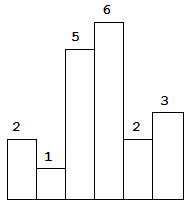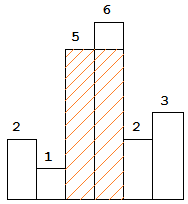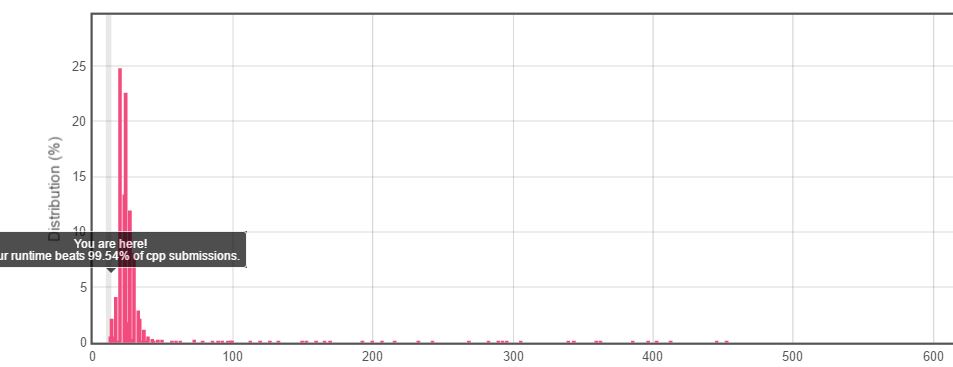leetcode題解分析_84. Largest Rectangle in Histogram
【題目】
題目連結
Given n non-negative integers representing the histogram’s bar height where the width of each bar is 1, find the area of largest rectangle in the histogram.

Above is a histogram where width of each bar is 1, given height = [2,1,5,6,2,3].

The largest rectangle is shown in the shaded area, which has area = 10 unit.
For example,
Given heights = [2,1,5,6,2,3],
return 10.
【分析】
最優runtime:

剛看到這道題的時候知道可以用動態規劃的寫法,但是由於能力有限,所以到最後還是沒有寫出一個O(n)的寫法,只能求助與網上其他博主,才發現思路是:等到heights[i]<=heights[i-1]的時候就計算,求max_height
還有就是可以巧妙地在vector heights後面補一個數0,方面迴圈
class Solution {
public:
int largestRectangleArea(vector<int 當然我們的stacks的pop操作可以借用i–來改寫,避免總是來回pop操作,類似這樣:
class Solution {
public:
int largestRectangleArea(vector<int>& heights) {
heights.push_back(0);
int size = heights.size();
stack<int> s;
int max_area = 0 ;
for( int i = 0 ; i < size ; i ++ ){
if( s.empty() || heights[s.top()] <= heights[i] ) s.push(i);
else{
int top = s.top();
s.pop();
max_area = max( max_area , heights[top] * ( s.empty() ? i : i - 1 - s.top() ) );
i --;
}
}
return max_area;
}
};這個時候用的是if-else結構而不是while結構,因為i–,後在for迴圈中還會i++所以跟上面一種解法的思路是一樣的
但是上面兩種解法的效率一般一直是在22ms到26ms之間,在leetcode上的runtime只處於50%的程度,這是因為我們總是需要push的操作,每次都需要初始一個空間來push
所以我們可以利用vector或者陣列結構,用i++,i–來操作,提高效率
class Solution {
public:
int largestRectangleArea(vector<int>& heights) {
heights.push_back(0);
int cur = 0, max_area = 0, top = 0;
int * stack = new int[heights.size()];
//vector<int> stack( heights.size() , 0 );
stack[top] = -1;
for(int i = 0; i < heights.size(); ++i){
while(top>0 && heights[stack[top]] >= heights[i]){
cur = (i-stack[top-1]-1)*heights[stack[top]];
top--;
max_area = max(cur, max_area);
}
stack[++top] = i;
}
return max_area;
}
};效率如圖:

